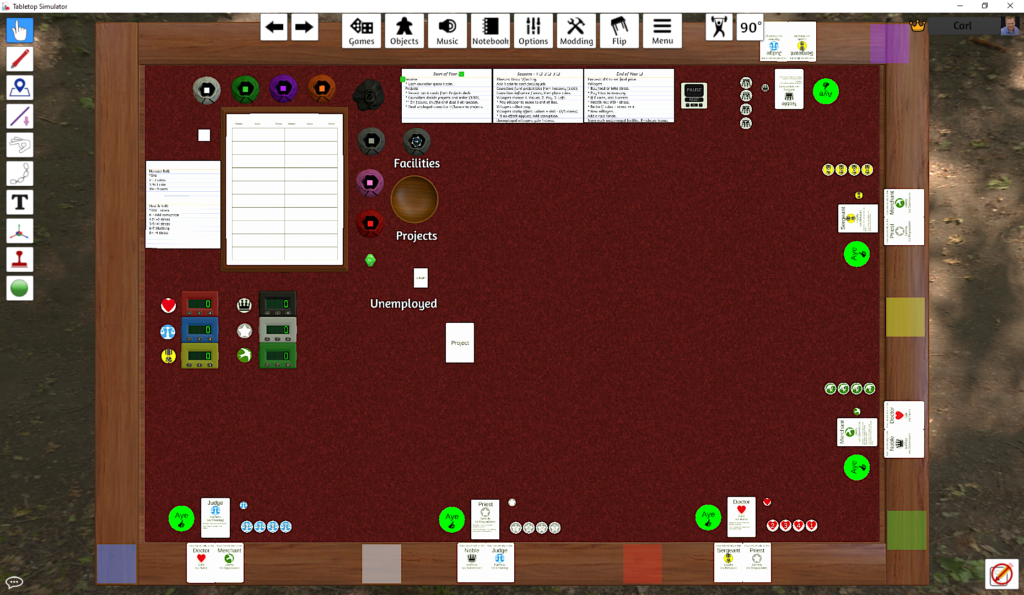Back to thinking about annual life events for villagers. The d10 – stress die roll I used previously did a good job of cycling the villagers through injury and death, but it was abstract and slow. In my last playtest, however, I forgot to include anything like it, and the villagers were too prosperous and effective for the game to be interesting. So, I think a set of cards is the way to go. They should almost always increase the villager’s stress–“stress” was originally “age”, until I realized I could combine the two–but they’re also an opportunity for more interesting and engaging things to happen. It’s a little tricky coming up with ideas that don’t overlap too much with stuff that’s already modeled by other game mechanisms, especially related to work.
My epiphany this morning was to design each life event card so that it includes a first-person quote from the villager. Instead of the Robbery card just saying “This villager gains stress and loses coins”, now it starts with “They took so much stuff. I don’t feel safe in my own home anymore.” Designing the effects of the card from there already seems to be inspiring me to come up with more creative ways to model the event. And I think the players will find it more engaging.


